This is from a series of posts by MABA resident artist Barry Van Dusen
January 26, 2016
Eastern Point Wildlife Sanctuary, Gloucester, PART 1
Eastern Point Wildlife Sanctuary is a small reserve, but it boasts a surprising diversity of habitats, including a mixed deciduous forest, a meadow, a cobble beach, rocky shorelines and a small saltmarsh.
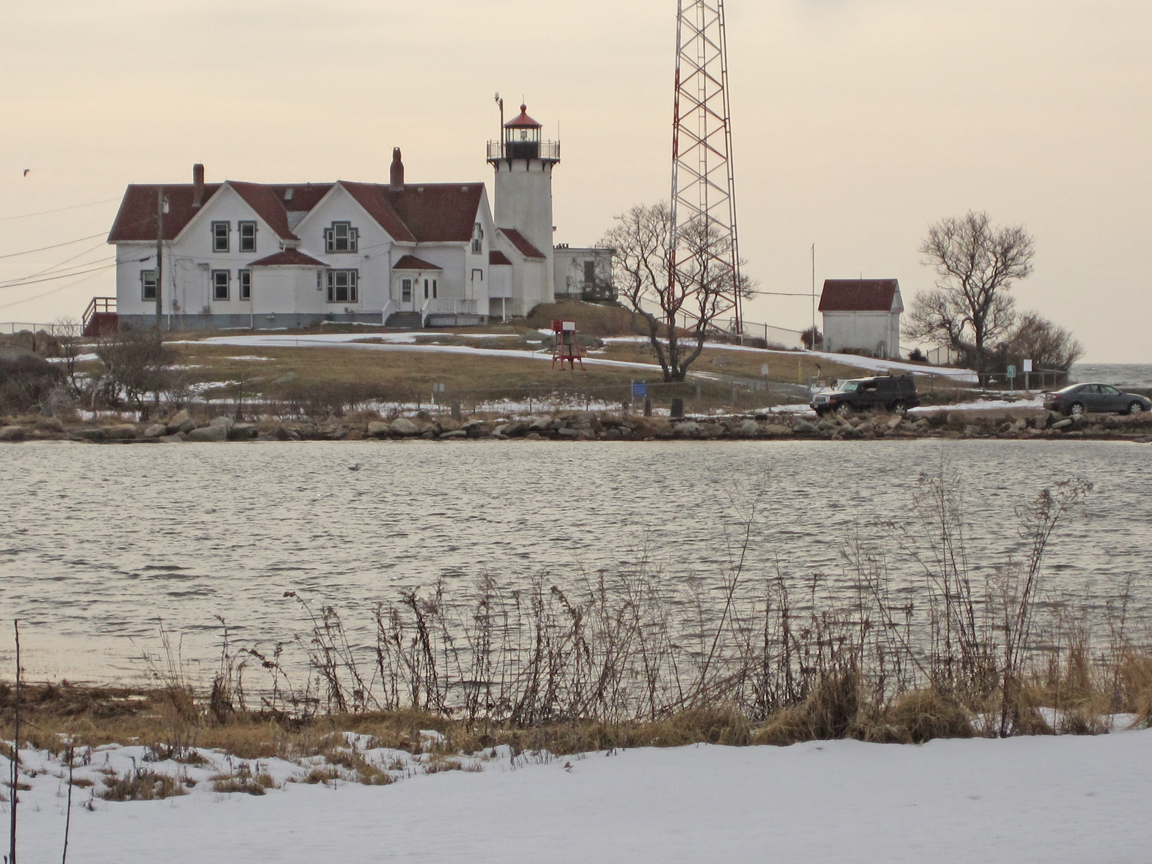
Eastern Point Lighthouse
At the sanctuary parking lot, you realize you’ve driven as far out the East Gloucester peninsula as solid ground will allow (at the very tip of the peninsula is the Eastern Point Lighthouse).
I am surrounded by ocean – the relatively protected waters of Gloucester Harbor lie to the west, and to the south and east are the vast expanses of the Atlantic. To the north, a small cove hosts a handsome flock of red-breasted mergansers, along with gadwall, mallards and a few buffleheads and eiders.
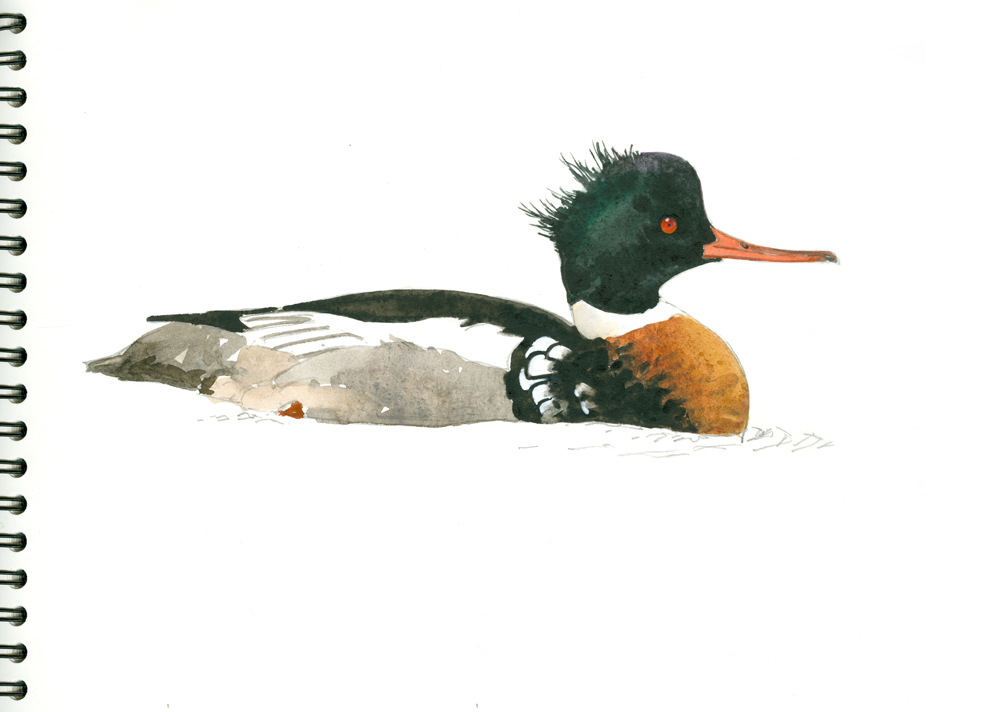
Red-breasted Merganser, watercolor on Arches hot-press, 10.25″ x 14″
The tiny adjacent saltmarsh is undergoing restoration to restore natural water flow and encourage native vegetation, but I could see that it was already a favorite haunt of mallards and black ducks.
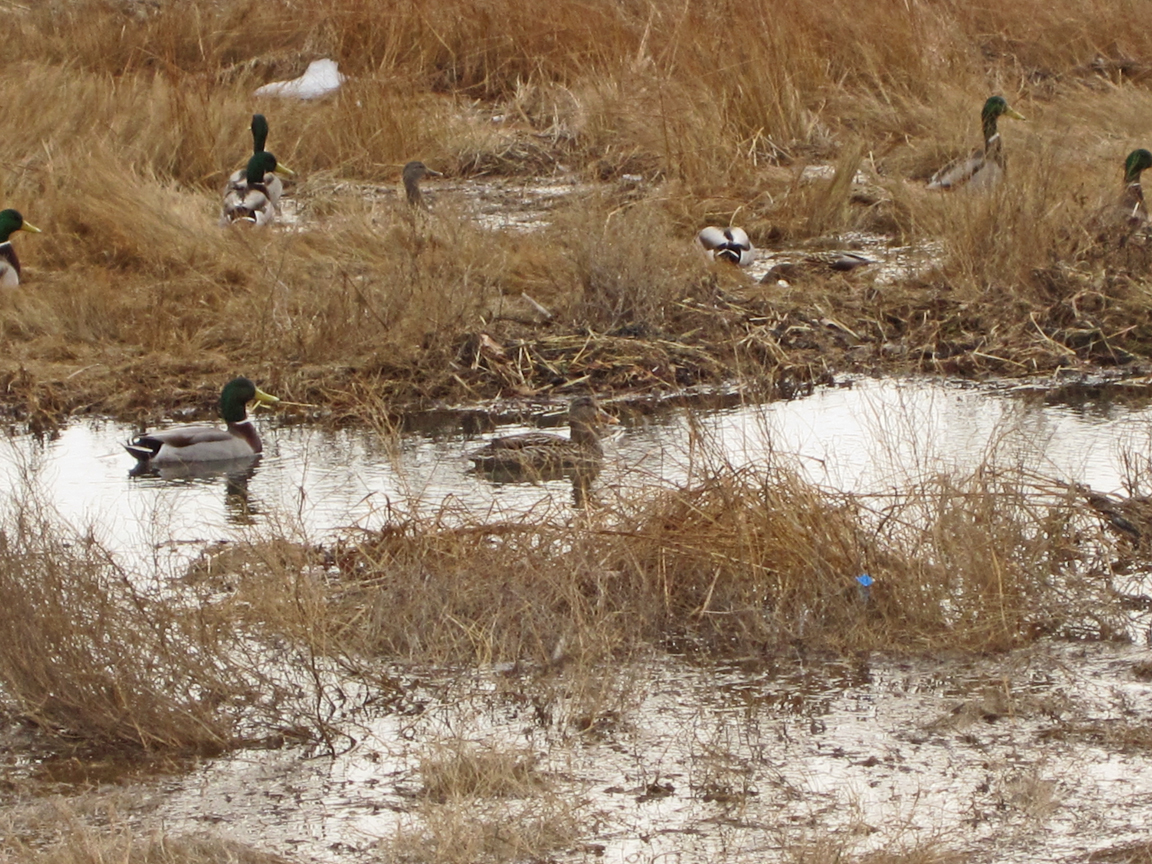
Eastern Point Saltmarsh
Out in the harbor are more of the same species, joined by a winter loon and a few pairs of surf scoters. One pair of scoters favors the area near shore, affording excellent views through the scope. Aside from puffins, few birds in New England have such outrageous bills! I start some drawings of the shapes and patterns involved, but with the birds bouncing around on the waves and diving frequently, and my eyes watering badly from the wind, my drawings are less than successful. Several times I retreat to the car to warm my hands. Nonetheless, I feel that my attempts are worthwhile, since the act of drawing brings an urgent attention to my observations, and supplies confidence for subsequent efforts back in the studio.
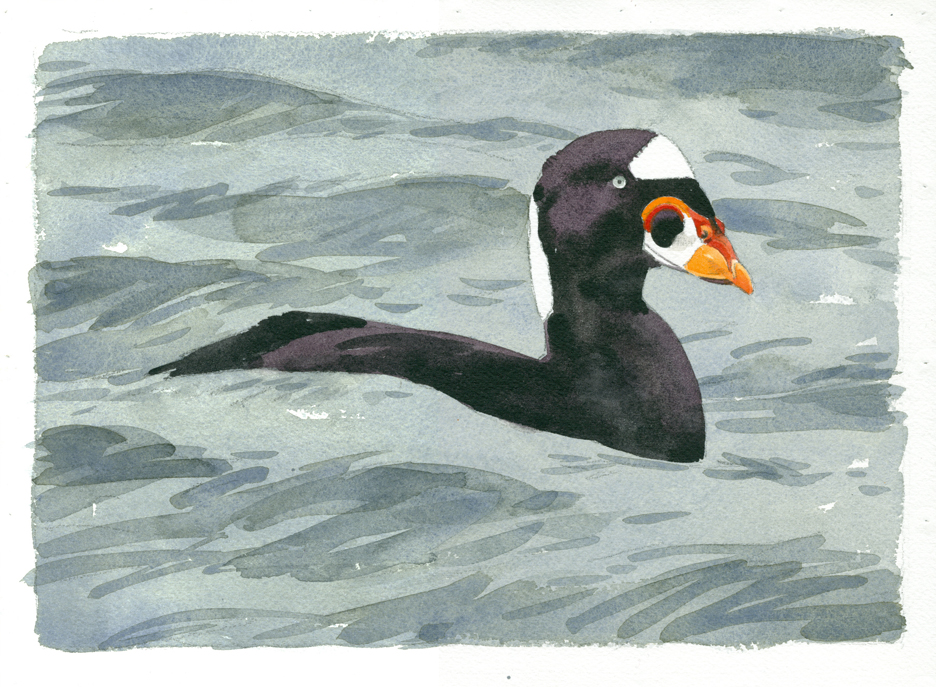
Surf Scoter, watercolor on arches cold-press, 9″ x 12″
Painting moving water has always been a challenge for me. If you over-render waves, they start to look frozen in place and you lose the sense of movement. I find it works best if I paint very quickly in a loose, gestural manner, and try to develop both soft and hard edges at the same time. I like to warm up my brush hand with a separate “practice sheet” before I tackle the final watercolor. That way I can start to feel the gesture of the waves, and develop a hand for the type of marks that will work best.
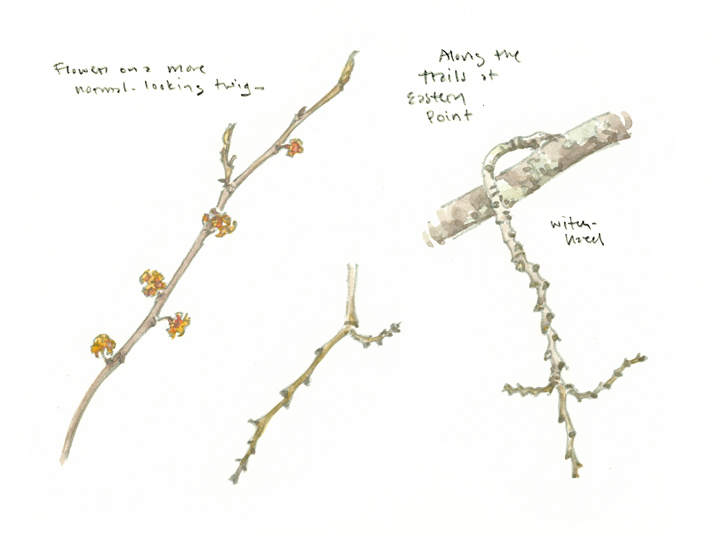
Witch-hazel sketchbook studies, pencil and watercolor, 8″ x 10″
The trails through the forest are easily explored in an hour or so, and they offer shelter this morning from the wind. I find I can sketch comfortably, and make studies of some of the plants that catch my eye. The witch-hazel twigs here show a tight zigzag pattern, and I’m puzzled by small clumps of curious seed pods poking up through the snow. Later, I learned that the seed pods were those of Indian Pipes. As Joe Choiniere explained to me: “Although the flowers nod, the entire structure turns upward as it goes to seed and often fools people”.
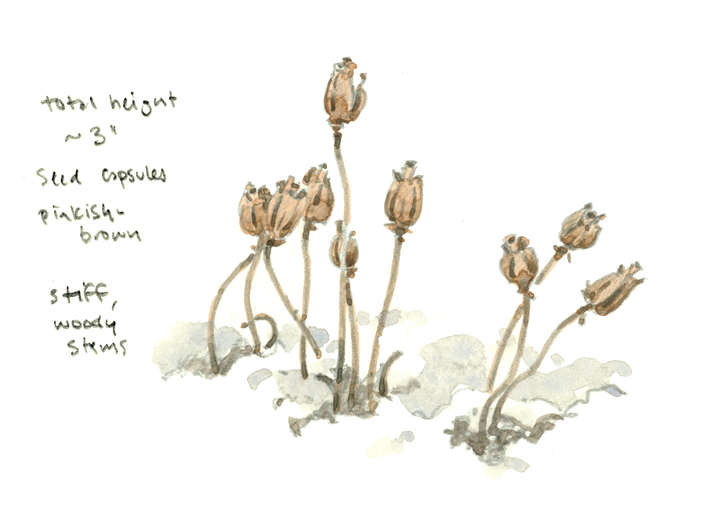
Indian Pipe seed capsules, sketchbook study, pencil and watercolor, 5″ x 6″
Gloucester is a popular winter destination for birders, so I am not surprised to meet some today, including Jim Berry, an expert in Essex County birds. He points out a group of about forty purple sandpipers hunkered down on the lee side of the Dog Bar Breakwater – a bit too far off for sketching. Jim also helps me sort out the gulls around the point today (stay tuned for part 2 – Gull-ology). Most of the birders are, of course, moving from spot to spot in search of “good birds”, whereas I confine my observations to the sanctuary and the immediate vicinity. If you want to “do art”, you can’t run around a lot, too!

